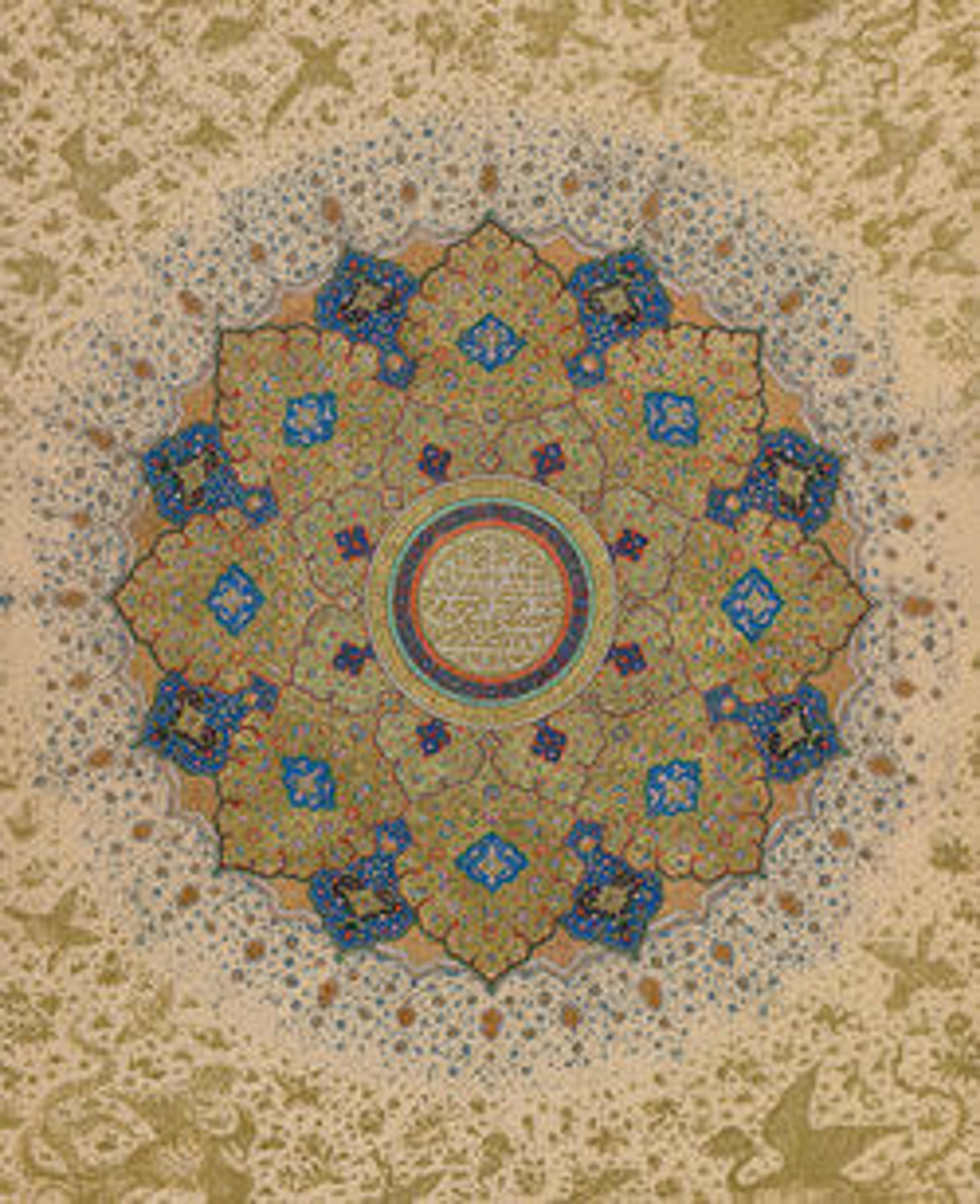Panel with Cusped Arches
Marinid architecture shared many characteristics with that of Andalusia. In both traditions, carved wooden friezes, usually placed near the ceiling above panels of stucco, constituted an important part of interior decoration. Here, an arcade of tall cusped arches is inscribed with the Arabic word for "good luck"— forward and backward—below each arch. The panel is possibly from a Qur'anic school in Fez.
Artwork Details
- Title:Panel with Cusped Arches
- Date:14th century
- Geography:From Morocco
- Medium:Wood (cedar); carved and painted
- Dimensions:H. 19 in. (48.3 cm)
W. 121 in. (307.3 cm)
D. 2 3/4 in. (7cm)
Wt. including crate 247 lbs. (112 kg) crate maybe half of this weight. - Classification:Wood
- Credit Line:Mr. and Mrs. Isaac D. Fletcher Collection, Bequest of Isaac D. Fletcher and Rogers Fund, by exchange, 1985
- Object Number:1985.241
- Curatorial Department: Islamic Art
More Artwork
Research Resources
The Met provides unparalleled resources for research and welcomes an international community of students and scholars. The Met's Open Access API is where creators and researchers can connect to the The Met collection. Open Access data and public domain images are available for unrestricted commercial and noncommercial use without permission or fee.
To request images under copyright and other restrictions, please use this Image Request form.
Feedback
We continue to research and examine historical and cultural context for objects in The Met collection. If you have comments or questions about this object record, please contact us using the form below. The Museum looks forward to receiving your comments.
